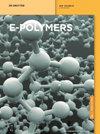Fatigue behaviour of Kevlar/carbon/basalt fibre-reinforced SiC nanofiller particulate hybrid epoxy composite
IF 3.3
3区 化学
Q2 POLYMER SCIENCE
引用次数: 0
Abstract
Abstract It is vital to conduct research on the behaviour of natural fibre composites under cyclic loading in order to have confidence in the mechanical durability. During this study, the fabrication of composite laminates will be carried out by the hybridization effect of natural and synthetic fibres. Quantifying the impact that the SiC filler (10, 20, and 30 g) has when combined with the fibre reinforcement and epoxy matrix (275 g) under cyclic loading circumstances and determining the significant sequence of hybrid composites are the goals of this research. The results of the tensile mode were used to determine the input parameters, and based on the tensile strength of the hybrid composite, 70% of the tensile strength was fixed at 3 Hz frequency as the input for fatigue analysis. The life span was then determined for the hybrid composite. The results of this fatigue test showed that increasing the amount of SiC nanofillers produced a very high potential output for the fatigue test. As a result of increasing the amount of silicon carbide fillers from 10 to 30 g, sample S3 was able to significantly tolerate 65% more life. Failure mode can be identified from scanning electron microscope analysis revealing the major porosity, matrix crack, and laminate bonding strength that causes the failure during fatigue analysis.凯夫拉/碳/玄武岩纤维增强碳化硅纳米填料颗粒杂化环氧复合材料的疲劳性能
摘要对天然纤维复合材料在循环荷载作用下的性能进行研究,对其力学耐久性具有重要意义。在本研究中,将利用天然纤维和合成纤维的杂交效应来制备复合层压板。量化SiC填料(10、20和30 g)与纤维增强材料和环氧树脂基体(275 g)在循环加载环境下的影响,并确定混杂复合材料的显著顺序是本研究的目标。根据拉伸模态结果确定输入参数,并根据复合材料的抗拉强度,将70%的抗拉强度固定在3hz频率作为疲劳分析的输入。然后确定了混合复合材料的寿命。该疲劳试验结果表明,增加SiC纳米填料的量可以产生非常高的疲劳试验电位输出。由于将碳化硅填料的量从10 g增加到30 g,样品S3能够显著延长65%的寿命。通过扫描电镜分析可以识别出疲劳分析过程中导致失效的主要孔隙率、基体裂纹和层合强度。
本文章由计算机程序翻译,如有差异,请以英文原文为准。
求助全文
约1分钟内获得全文
求助全文
来源期刊

e-Polymers
化学-高分子科学
CiteScore
5.90
自引率
10.80%
发文量
64
审稿时长
6.4 months
期刊介绍:
e-Polymers is a strictly peer-reviewed scientific journal. The aim of e-Polymers is to publish pure and applied polymer-science-related original research articles, reviews, and feature articles. It includes synthetic methodologies, characterization, and processing techniques for polymer materials. Reports on interdisciplinary polymer science and on applications of polymers in all areas are welcome.
The present Editors-in-Chief would like to thank the authors, the reviewers, the editorial staff, the advisory board, and the supporting organization that made e-Polymers a successful and sustainable scientific journal of the polymer community. The Editors of e-Polymers feel very much engaged to provide best publishing services at the highest possible level.
 求助内容:
求助内容: 应助结果提醒方式:
应助结果提醒方式:


